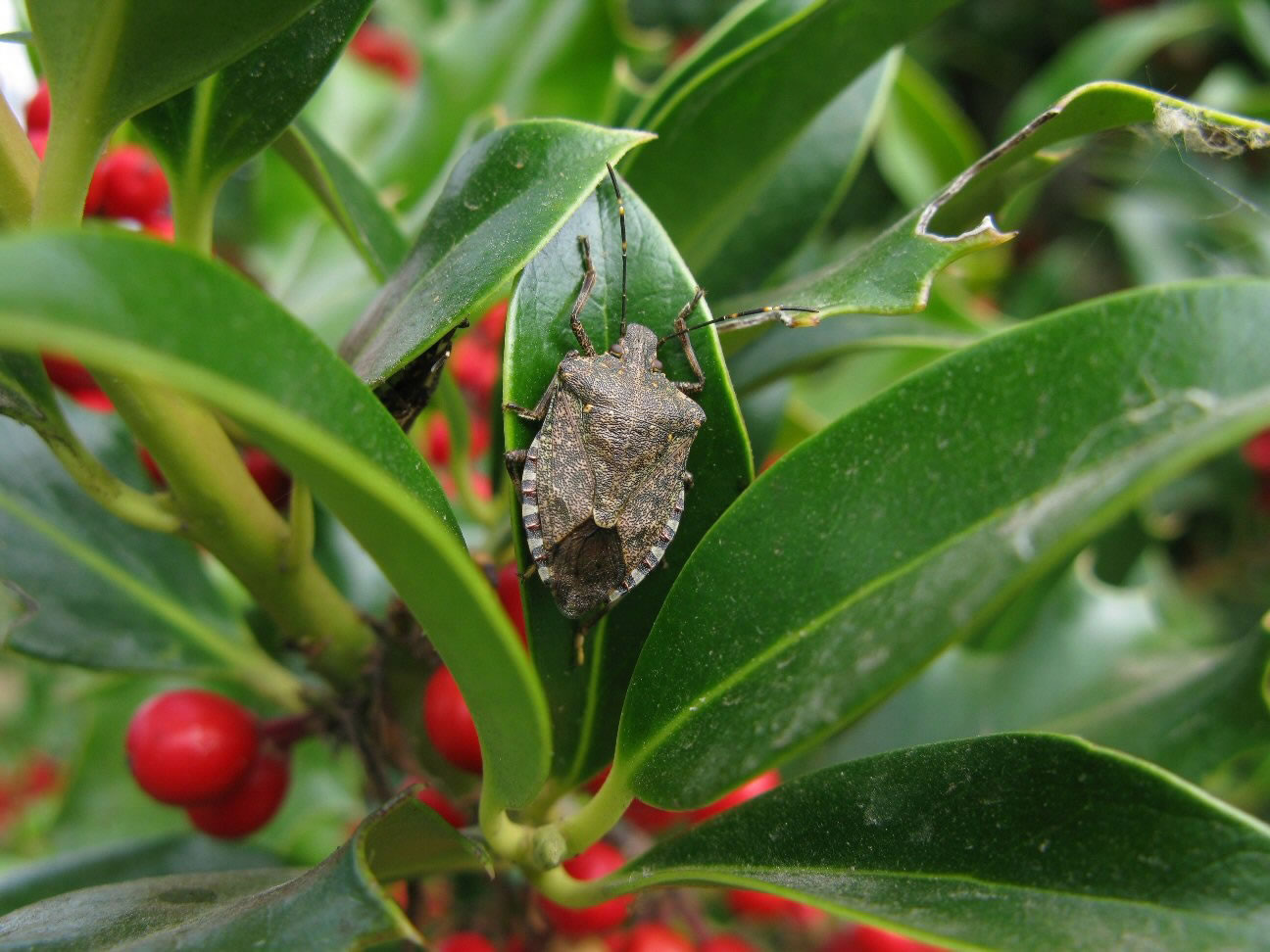The coming warm, sunny days are filling Clark County farmers with a newfound sense of dread.
Such days are great for growing plants, of course, but they’re also bringing out a rapidly growing threat to the region’s fruit and vegetable crops: brown marmorated stink bugs.
The invasive, fruit-munching pests, which hail from Asia, took out about half of farmer Joe Beaudoin’s Granny Smith apple crop at Joe’s Place Farms last season.
And as spring sets in, the bugs emerge from their winter slumber. They’ll seek out sunny days for mating and egg-laying, and there’s not much that farmers can do to stop them.
“This could be the worst thing that we’ve ever seen here,” Beaudoin said. “We don’t know how to control it.”
The bugs spread up Oregon’s Willamette Valley and into the Columbia River Gorge over the past year.
“They’re in The Dalles, Yakima. The worst, though, is probably the Willamette Valley and Vancouver,” said Peter Shearer, a professor of entomology at Oregon State University.
The brown marmorated stink bug, called Halyomorpha halys in scientific lingo, first appeared in the United States in 1998 in Pennsylvania. The bugs eat pretty much everything, including apples, peaches, grapes, corn and soybeans.
In 2010, the bugs destroyed about $37 million worth of apples in the Mid-Atlantic region, according to the U.S. Apple Association. And Washington and Oregon could face a similar dilemma in the next few years.
The bugs have been confirmed in several Oregon counties, including Clackamas, Marion, Multnomah, Polk, Washington and Yamhill.
The biggest Washington outbreaks so far are in Clark and Skamania counties, but growing numbers are starting to appear in Klickitat and Chelan counties and in the Yakima Valley and Walla Walla.
“One of the most disturbing things about this bug is its scope,” said Tracy Leskey, an entomologist with the U.S. Department of Agriculture, in a press release from Washington State University.
“In a relatively short period, they’ve spread to 40 states; and they’ve made it look so easy.”
WSU, OSU and the USDA are part of a nationwide effort, with 10 research agencies that are looking for ways to stop the outbreak.
The bugs are extremely mobile — they can fly up to 40 miles in a day on their own, and they’re also good at hitching rides with unsuspecting motorists along our freeways.
Sprays don’t work well against them, either, Beaudoin said.
“Right now what they’ve done is they’ve overwintered in people’s homes, in the walls in tiny cracks,” Beaudoin said. “They’re attracted to heat and light. My daughter’s got them in her house. They’re everywhere.”
One thing that he’s looking at right now are various chemical traps for the bugs. He’s also watching the undersides of green leaves on his properties, which is where the bugs like to lay clusters of about 30 light green eggs per batch.
When the nymphs emerge in May or June, they’re bright and sort of orange-ish, with black legs, dark red eyes, a yellow-reddish underbelly and black stripes. The adults are brown and shield shaped and have a gray underbelly.
Beaudoin hopes to trap them and kill them, but he said it’s important to not kill native stink bugs along with them.
The invasive species’ markings are slightly different than those of native stink bugs, which have a yellowish underbelly. The native bugs are actually helpful to farmers.
“Several of our native stink bug species are beneficial because they feed on other insects that damage crops,” said Michael Bush, an entomologist with WSU’s Yakima County Extension. “That’s why it’s important to know the difference and not kill them all.”
Scientists do have a plan to keep the bugs in check, but the method is still being evaluated by the USDA and would require international permits from Mexico and Canada before it begins, Shearer said.
The wasp solution
In Asia, the bugs’ natural enemy is a tiny gnat-sized parasitic wasp that lays its own eggs in the brown marmorated stink bug’s eggs, which are used as a food source.
The USDA has been evaluating the wasps for several years now, but the agency has to be careful that the wasps don’t kill native bugs or create a worse situation than already exists.
But so far the plan seems to be moving forward, and the wasps could get clearance to be used in the next few years, Shearer said.
“When they’re released, we just need to make sure that they’re very specific in attacking the brown marmorated stink bugs,” Shearer said. “It’s a rigorous scientific process.”
The threat to Northwest agriculture from the stink bugs means it’s a priority, though, he said. Washington is by far the nation’s largest apple producer.
“The value of horticulture crops in the Northwest, it’s huge,” Shearer said. “We’re talking billions of dollars in potential losses.”
If you identify the bugs around your home, Shearer suggests dropping them in soapy water to kill them.
Not all of Clark County’s farms have been hit yet.
Frances Kunze, owner of Kunze Farms, said workers haven’t found any in her crops so far. But they are watching.
“It’s funny different areas have different things,” she said after hearing about Beaudoin’s apple crop. Beaudoin’s farm in east Vancouver isn’t all that far from hers.
There also haven’t been any reports of the creatures eating grapes from Southwest Washington wineries, but that could change this year, Shearer said.
The bugs have been confirmed at three vineyards over the river in Oregon so far. And when they eat grapes, they taint wines made from them with an unpleasant scent.
“Poor Joe, he already lost a lot,” Shearer said of Beaudoin. “I think this is going to get worse and worse and worse for all the farmers in the region. We’re in the outbreak phase, so it’s just going to grow.”



